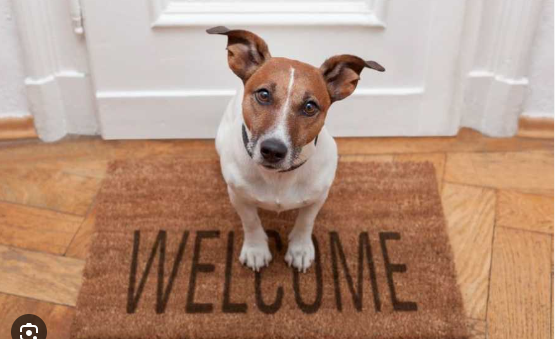The doorbell rings, and suddenly, your peaceful home transforms into a cacophony of barks. Managing a dog’s enthusiastic response to the doorbell can be a common challenge for many dog owners. This article explores practical strategies for curbing canine doorbell drama, providing insights into training techniques and behaviour management to foster a more peaceful entrance experience.
Understanding the Root Causes:
Before addressing the doorbell-related barking, it’s crucial to understand why your dog reacts this way. Whether it’s due to a protective instinct, excitement, or learned behaviour, identifying the root causes will guide your training approach.
Positive Reinforcement Training:
Positive reinforcement is a powerful tool in reshaping your dog’s behaviour. When the doorbell rings, reward your dog for remaining calm. Use treats, praise, or toys to create positive associations with the sound, gradually shifting their response from barking to expecting positive outcomes.
Desensitization Techniques:
Gradual exposure to the doorbell sound in a controlled manner can help desensitize your dog. Use recordings of the doorbell at a low volume, rewarding calm behaviour. Gradually increase the volume as your dog becomes more comfortable, reinforcing that the sound is not a cause for alarm.
Alternative Behaviors:
Teach your dog an alternative behaviour to replace barking when the doorbell rings. For example, you can train them to go to a designated spot or use a specific command. This redirects their energy and focuses their attention away from barking.
Create a Doorbell Routine:
Establish a consistent routine when the doorbell rings. This can include having your dog in a designated area or using a leash to prevent them from rushing to the door. Consistency helps your dog understand what is expected of them, reducing the likelihood of doorbell-induced excitement.
Practice Controlled Doorbell Scenarios:
Enlist the help of friends or family to simulate doorbell scenarios for training purposes. This controlled environment allows you to reinforce positive behaviour and correct any unwanted reactions. Gradually increase the complexity of scenarios to support training in various situations.
Professional Training Assistance:
If dog barking at doorbell persists despite your efforts, consider seeking professional assistance from a certified dog trainer or behaviorist. They can assess your dog’s specific behaviour and provide tailored training strategies.
Conclusion:
Curbing canine doorbell drama requires patience, consistency, and positive reinforcement. By understanding the root causes of your dog’s reaction and implementing effective training techniques, you can transform the doorbell experience from a source of chaos to a moment of calm anticipation. Every dog is unique, so tailor your approach to suit your furry friend’s personality and needs. With dedication and a structured training plan, you can successfully manage doorbell-related barking and create a more harmonious home environment for you and your canine companion.
